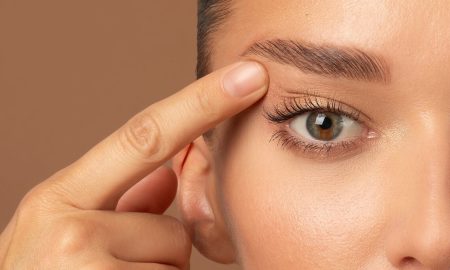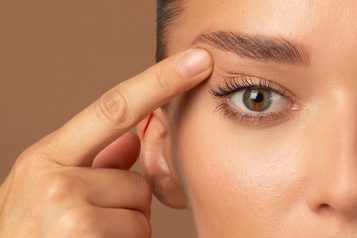
This month we’re adding a “Mole Day” to our wellness routines. Keeping up on doctor’s visits and self-care routines can be challenging, but when it comes to moles, there is not much room for error. Even for the months when you don’t have a scheduled appointment with your dermatologist, Haute Beauty expert Dr. Mara Weinstein suggests making a routine of a monthly "Mole Day" to take a closer look at the spots on your body and stay on top of what’s going on with your skin. A practice that is especially important if your family has a history of skin cancer.
This monthly routine can also make annual skin checks with your dermatologist easier to navigate if you already have some spots in mind. If your body is covered in moles and you are interested in taking a more involved approach to your skin, here is an easy-to-follow regime by Dr. Weinstein consisting of the ABCDEs of melanoma for your monthly “Mole Day”! Happy checking!
How do I do a skin check?
Self-skin exams are recommended monthly. I like to tell my patients to pick a day on the calendar and call it “Mole Day” every month. On this day, you will ensure you're in a well-lit room (preferably the bathroom) and in front of a mirror. Hand-held mirrors are also helpful for areas that you can't see as well. Check your face, ears, neck, chest, and belly in the mirror. Also, be sure to look at your underarm areas, both sides of your arms and hands, between fingers, and under your fingernails. Also, take a look inside your mouth! Women will need to lift their breasts to check the skin underneath. You should check your thighs, shins, calves, feet, between your toes, and under your toenails.
View this post on Instagram
If you notice new spots on your skin, spots that are different from others, or spots that are changing, itching, or bleeding, they might need further evaluation from your board-certified dermatologist. It’s helpful to remember the ABCDEs of melanoma, the deadliest form of skin cancer, when you are looking at your spots.
A: asymmetry, if one side of the mole doesn’t look like the other, this can be concerning.
B: irregular borders,
C: color change; for example, if you notice a mole that used to be brown but now is black or one that is two tones (brown and pink, for example), then this should raise a red flag.
D: diameter greater than 6mm (about the size of a pencil eraser), and
E: evolving, so if the mole is changing in any way, it's always OK to visit your dermatologist for a spot check.
Annual full body skin checks are recommended for patients of all ages with over 50 moles on their body, history of atypical moles, history of indoor tanning, or family history of melanoma. Patients who have had an organ transplant are at increased risk for developing skin cancer, and therefore, annual skin checks are recommended for this subset of patients as well. If none of the histories above applies, then skin checks with a dermatologist are recommended starting around age 40, when other cancer screening visits are recommended as well, like mammograms and colonoscopies.
For more information, visit Dr. Mara Weinstein Velez's social media:
























